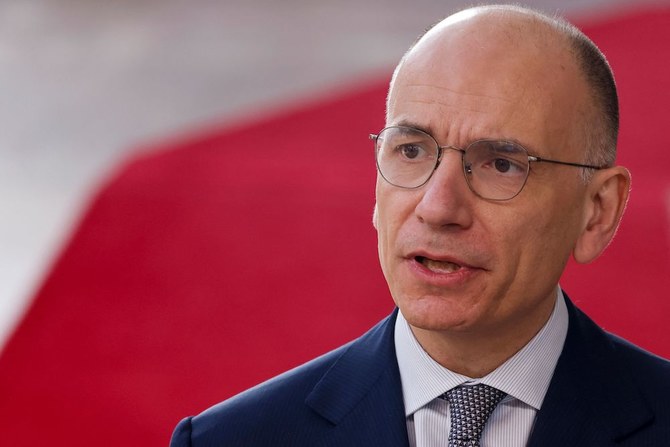Andrew Hammond
A red-letter day is one that is of special significance. The phrase’s origins date back to the days of the Roman Empire, when important occasions were colored red on calendars. Fast forward about two millennia and the EU had its latest big moment of significance this week, with former Italian Prime Minister Enrico Letta delivering his potentially landmark report on the future of the European Single Market. While this is a topic intrinsically economic in origin, geopolitics are also driving what is a sweeping set of recommendations.
According to Letta, the need for change reflects the vastly different international political context the EU has faced in recent years, even with long-standing allies. He has specifically warned that a “Trump 2 (second US presidential term for Donald Trump) will be different from Trump 1 … the single market of the beginning was for a small world, now we need a single market with teeth for a big world.”
What Letta is pointing to here is how much the world has changed since 1993, when the single market, which allows the free movement of goods, services, people and capital within the EU, came into being. While this initiative is widely seen as one of the bloc’s biggest achievements, there are growing concerns that it needs a reboot to reflect the vastly changed world of the 2020s.
Whereas the EU accounted for about 20 percent of global gross domestic product 30 years ago, it is nearer half that today (about 13.3 percent) and still declining. While one constant is that the US remains an economic peer of the EU, the massive Asian emerging markets of China and India are the new kids on the block, providing a major new set of challenges, as well as opportunities.
Letta is clear in his almost 150-page report that the single market faces its greatest ever threat as the EU recovers from the economic impacts of the COVID-19 pandemic and its aftermath and the war in Ukraine. He argues that “no single member state can compete with the US on gas or oil prices, as they are the world’s largest fossil producer … Nor Europe can replicate some advantages that China’s state-controlled economy can deploy.”
He added: “But the EU has a continental scale energy market united by a modern, sophisticated regulatory framework unmatched around the world.” Letta indicated that the bloc increasingly needs to find continent-wide solutions, including looking at how subsidies “can become a more European tool and less a national tool.” His conclusion, therefore, is that “the EU must step up its efforts to develop a competitive industrial strategy capable of counteracting instruments recently adopted by other global powers, such as the US Inflation Reduction Act.”
The report has a strong focus on integrating the energy, telecommunications and finance industries, with a roadmap to achieve progress in the next half-decade. For example, Letta asserts that the EU should further integrate on energy. Specific ideas proposed include: adopting a cross-border cost-benefit allocation methodology to expedite the rollout of regional offshore wind projects; developing cross-border systems for procuring flexibility and joint auctions for renewables; developing green bonds to support energy infrastructure projects; revising the EU gas supply security framework; and setting up a mechanism for the joint purchasing of critical minerals.
So, the goal is to advance the EU’s green and digital transitions while boosting its strategic autonomy and industrial, trade and market competitiveness. According to various stakeholders, including former European Central Bank chief Mario Draghi, and wider stakeholders such as the European Trade Union Confederation, this means plugging a funding gap between Europe and other economic peers like the US in terms of investment that may be equivalent to about €500 billion ($531 billion) a year, or more than 3 percent of the bloc’s GDP.
The Letta report was due to be discussed this week by the EU’s senior leaders, including its 27 presidents and prime ministers. Moreover, it will be given an added boost by the synergy it has with a forthcoming report on the broader topic of European competitiveness by Draghi, another former Italian prime minister.
Draghi has also clearly indicated that Europe must respond to the ongoing massive changes in its external environment. Specifically, he has highlighted that three of the key pillars it has long relied on – Russian energy, Chinese exports and the US security umbrella – are all potentially transforming, albeit for different reasons.
In this context, Draghi believes that the EU needs to take bold, decisive action, from lowering energy prices to reducing regulatory burdens. However, he also argues that massive investments are needed in the green and digital transitions.
Draghi highlights these twin transitions as being key for Europe with good reason. On the digital transition, the region risks failing to capitalize on the next technology revolution of artificial intelligence and quantum computing, just like it did with the early 2000s internet technology boom. On the green transition, meanwhile, the EU is placing much emphasis on this policy area through its European Green Deal. However, this is not always matched by commensurate resources. Meanwhile, America’s $369 billion Inflation Reduction Act is widely seen as a game-changer and China continues to offer significant state support to its firms.
The Letta and Draghi reports both reflect major moments in Europe’s political economy. The key question now is whether, in the midst of a big election year and alongside other crises like Ukraine and the Middle East, the EU will be able to act decisively. The key next step will be to successfully marshal a bloc-wide consensus around a bold set of reforms and the funding to deliver this, with a potential window of opportunity in the next European Commission from late 2024.







